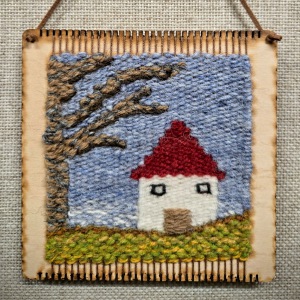HOLLOW HABITATS
| Published: 11-01-2019 5:47 PM |
As leaves are shed from broad-leaved trees, details of the forest are revealed. Bird and squirrel nests, and hives of bald-faced hornet all seem to pop into view once the foliage has fallen. Trunks and branches reveal patterns and sometimes holes in the trees are exposed. These holes are worth examining because they are likely being used by one or more species of wildlife.
Tree cavities may seem like a blemish on a trunk, but they are used for nests and shelter by 35 local species of birds, at least 18 types of mammals, countless insects and even some amphibians and reptiles.
When a tree limb or branch is broken off by wind, snow, ice or lightning, holes may form. The open wound allows fungus to get in and begin to rot the exposed wood. As the wood softens birds such as woodpeckers, chickadees and nuthatches will peck at the wound and excavate a hole. The birds may be searching for insects that are munching on the cellulose in the tree, or they may be creating a cavity in which to nest.
Each of the local species of woodpecker creates their own nest hole. Their long, strong beaks are designed for chiseling wood. They also have an extra layer of fat surrounding their skull which acts as a shock absorber as they hammer their beak against the tree. The hole size will vary based on the size of its creator, ranging from a 1½ inch tunnel, made by the downy woodpecker, to the pileated woodpecker’s hole at 3 to 4 inches across.
After making the entrance hole, they work their way into the tree, tossing chips and shavings as they deepen the cavity to the desired size and shape to accommodate their eggs and growing chicks. They do this each year, creating new holes and leaving past nests to be used by other creatures.
Some birds such as chickadees, nuthatches and titmice are able to dig out softened wood at a wound site, but tree swallows, wrens, bluebirds and great-crested flycatchers rely on abandoned woodpecker holes for their nests.
Many people put out nest boxes to attract some of these birds to their yards. Putting up multiple boxes can reduce the competition between birds. Territorial disputes between male bluebirds and tree swallows can be very dramatic and is proof that cavities are highly desirable real estate in the early spring.
Larger holes, left by the pileated woodpecker, or perhaps just a large limb that broke off, are essential for owls including the saw-whet, Eastern screech and barred owl. They will use cavities with holes that are 6 to 12 inches, 12 to 18 inches and more than 18 inches deep, respectively.
Article continues after...
Yesterday's Most Read Articles
 By all appearances, Canadians are leery of coming to NH
By all appearances, Canadians are leery of coming to NH
 Plans advance on $27M Memorial Field project
Plans advance on $27M Memorial Field project
 “A dream come true” – Family opens housing for adults with disabilities in Concord
“A dream come true” – Family opens housing for adults with disabilities in Concord
 Memorial Day events in the Concord area
Memorial Day events in the Concord area
 Giving life back to board sports: Back Alley Boards upcycles boards into art
Giving life back to board sports: Back Alley Boards upcycles boards into art
 ‘I thought we had some more time’ – Coping with the murder-suicide of a young Pembroke mother and son
‘I thought we had some more time’ – Coping with the murder-suicide of a young Pembroke mother and son
Often people are surprised to learn that several species of ducks also nest in tree cavities. Wood ducks, hooded and common mergansers will also utilize nesting boxes that are put on trees or poles in and around wetlands. These artificial nests make a real difference when the natural source is scarce.
Tree cavities are not only used during nesting season, but may also provide winter shelter. Groups of chickadees will huddle together in a cavity, helping to keep each other warm on a cold winter night.
Cavities provide shelter for many species of mammals, including bats, all of the local tree squirrels (red, gray, flying), porcupines, raccoons, and members of the weasel family, including fishers. Obviously the size of the hole will vary for these animals. The rodents are able to gnaw on the holes to enlarge or modify as needed but the teeth of predatory animals are not designed for such work so they will rely on what they find.
Of course animals with no teeth such as tree frogs are very dependent on other excavators to create their shelter, but they are as likely to hide under loose bark as they are to enter a hole.
With all of these animals relying on standing dead trees or trees that are “damaged,” It’s important for landowners to leave some of these trees as part of a diverse forest. While it might be tempting to cut the dead or damaged trees for fire wood or aesthetic reasons, it’s important to remember that these holey trees are natural apartment buildings for a wide variety of our wild neighbors.
]]>







 Artist Spotlight: Brittany Batchelder
Artist Spotlight: Brittany Batchelder Young Professional of the Month Katie Duncan shares about creativity, community, connection
Young Professional of the Month Katie Duncan shares about creativity, community, connection Tiny Tapestry sale at Red River Theaters raising money for Concord Coalition to End Homelessness
Tiny Tapestry sale at Red River Theaters raising money for Concord Coalition to End Homelessness Bowling for a cause: Angelman Syndrome Fundraiser coming to Boutwell’s
Bowling for a cause: Angelman Syndrome Fundraiser coming to Boutwell’s
